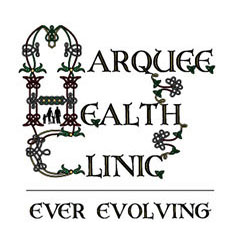Drug addiction is a complex brain disease which has a deep negative impact on many levels of our society. In the next two issues of NOVA magazine, we will be looking at the different methods of treatment currently being followed in both Western and Oriental medicine.
Throughout history, in every corner of the globe, people have forever been looking for ways to escape from their living difficulties with various means. There has been no civilisation which has not tried to change its perception of reality through alcohol, tobacco, plants and other mind altering substances.
History tells us that human beings will always be looking for anything that accomplishes that role, regardless of the consequences. In the early days, the worst enemy was hunger, and when it could not be defeated with food, drugs became the substitute. The most common European drug in medieval times was the poppy seed. Vast areas were devoted for its cultivation. It was used to make bread, mixed together was hemp seeds spiced with coriander, and cumin. Excess intake allowed the poor to drift into a dreamlike condition. They were often visited by terrifying visions of goblins and vampires, but at least their fear were not as debilitating as the starvation they faced. At the same time, on the other side of the globe, the South American Aztecs had been enjoying the hallucinative properties of various forms of cactus and mushrooms for many years. A few centuries later, in the highest level of society of Europe, smoking opium became the fashionable way to escape from pain and boredom. More recently In the United States, when alcohol prohibition was attempted in the 1930s, soft drinks laced with cocaine became a popular substitute. In the 1960s, a cultural change in society saw an explosion of drug users in the Western world. Despite hundreds of billions of dollars having been spent in law enforcement since the hippy days, the incidence of drug addiction is today as prevalent has it has ever been, while alcoholism remains one of the main cause of death around the world.
Understanding why one person will become trapped in a circle of addiction, and not another in the same situation is a domain which has fascinated the medical profession for decades. Millions of dollars in medical research have been spent to try to understand the complexities of human behaviour. We have learnt that addiction is a biological and pathological process which occurs in the limbic system of the brain. Every form of addiction: from smoking, to alcohol, gambling, and even shopping, originates from the same area of neural tissues called “the amygdala”, or “pleasure centre” which also rules sexual arousal.
Before attempting to treat any forms of addictions, one needs to understand the complex psychological patterns involved. The path to drug addiction begins with the voluntary act of taking drugs, then gradually the person’s ability to make decision becomes compromised due to the effects of prolonged drug exposure on brain functioning. Multiple neural circuits are affected including those involved in motivation, learning, memory, and inhibitory control over behaviour. Soon the recipient is overwhelmed with an intense, uncontrollable craving sensation which has to be satisfied at all cost. Drug addiction has many dimensions which affect an individual’s life, and drug addicted individuals have often other mental disorders which have to be taken into account. Being a chronic disease, most patients require long term care to achieve the ultimate goal of sustained abstinence, and control over their lives again.
Modern Western treatment approach begins with detoxification, followed by treatment, and relapse prevention. Easing withdrawal symptoms with medications is an important part of the initial treatment, but it is only the first step. Medically assisted withdrawal without any other forms of treatment will always have a very limited success. Nevertheless, medications can be used to help regain normal brain function, and to prevent relapse. There are specific types of medications for specific forms of drugs. In the case of heroin addiction Methadone and Buprenorphine are used to suppress the withdrawal symptoms and relieve the cravings, while Naltrexone works by blocking the effects of opioid drugs at the receptor sites. Long term recovery from addiction will only be achieved if the patients succeed in changing their behaviour and attitudes related to drug abuse. This is the goal of outpatient’s behavioural treatments programs which can be delivered in individual or group settings. Cognitive behavioural therapy helps patient to recognize, and manage the situations in which they are more likely to use drugs. Family therapy can be useful to help adolescents with drug abuse problems, and their family resolve long lasting conflicts and break down in communication between the different members.
The Chinese medical framework considers drug addiction to be a disturbance of the “Shen”, which is often loosely translated as the spirit, or the mind. It is housed into the heart. All the mental and emotional attributes of a person are shared between the five main organs of the body. How they are affected by drug addiction, and how they can be treated will our next topic in NOVA magazine.
© Olivier Lejus – www.olejusacupuncture.com

